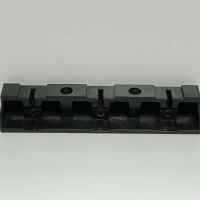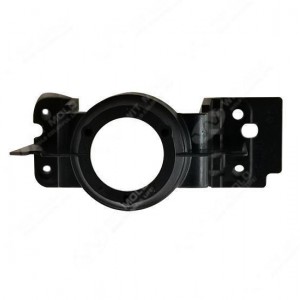Key Aspects of Thermoset Molding
Materials:
Thermosetting Polymers: These include epoxies, phenolics, polyesters, and silicones. These materials undergo a chemical reaction when heated that causes them to harden into a set shape.
Reinforcements: Often, thermosets are reinforced with materials such as glass fibers, carbon fibers, or aramid fibers to enhance their mechanical properties.
Process:
Mixing and Preparation: The thermosetting polymer is mixed with any necessary additives and fillers to form a compound. This compound is then partially polymerized to a stable, uncured state (often referred to as “B-stage”).
Molding: The compound is placed into a mold. Several molding techniques can be used:
Compression Molding: The compound is placed in an open, heated mold cavity. The mold is closed, and heat and pressure are applied to shape and cure the material.
Transfer Molding: The compound is preheated and then forced into a closed mold through a transfer chamber. This process allows for more intricate shapes and is used for more complex parts.
Injection Molding: Similar to thermoplastic injection molding, but for thermosets. The compound is heated and injected into a mold where it cures.
Curing: The material undergoes a curing process where it is permanently set. This is typically done by applying heat, which activates the chemical reaction that cross-links the polymer chains.
Cooling and Demolding: After curing, the mold is cooled, and the solidified part is removed.
Advantages:
Durability: Thermoset materials are highly durable and resistant to heat, chemicals, and wear.
Dimensional Stability: Once set, these materials maintain their shape and do not deform under stress.
Cost-Effective: For high-volume production runs, thermoset molding can be very cost-effective due to the relatively low cost of raw materials and the ability to produce complex shapes without extensive machining.
THERMOSET TRANSFER MOLDING Applications:
Automotive Parts: Components like brake pistons, distributor caps, and electrical housings.
Electrical and Electronics: Insulators, circuit breakers, and connectors.
Household Items: Cookware handles, appliance housings, and adhesives.
Industrial Equipment: Gears, pump components, and machine parts that require high strength and resistance to environmental factors.
Challenges:
Processing Complexity: The curing process needs precise control over temperature and pressure.
Waste Management: Once cured, thermosets cannot be remelted or reshaped, leading to potential waste disposal issues.
Tooling Costs: High initial costs for tooling and molds, although these costs are offset over large production runs.






